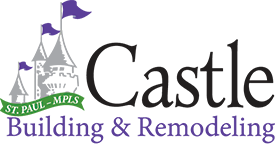Whether you’re looking to add space to your existing property or thinking about providing a living space for aging relatives in the future, an accessory dwelling unit, or ADU, can be the perfect solution. If you live in the Twin Cities, an ADU can help you make the most of your space. Just know there are some challenges you might have to face.
Let’s take a look at the problems and potential of building an ADU in the Twin Cities.
Why Build an ADU?
While the exact details of the build will vary from property to property, in general, accessory dwelling units are designed to be a secondary living area, either attached to or detached from the primary dwelling.
They’ve been called everything from “granny flats” to “mother-in-law pads” and a thousand other names over the years. You can find them standing alone on a property or attached to the main building, separated by a door. You may also find cases where existing rooms — such as basements or attic spaces — have been converted into ADUs.
The reasons for building an ADU are as varied as the people building them. Some homeowners like to rent out their ADUs as a way to generate additional income. Others use it as office space, and still others use it as a living space for elderly or disabled relatives who need some monitoring but want to maintain some independence.
When installed properly, an ADU can even add 20-30% to the value of your home with a quick return on investment if you’re planning to rent the space.
Regulations and Over-Regulation in the Twin Cities
In the Twin Cities, ADUs were off the table until 2016, when changing legislation allowed their construction.
Minneapolis and St. Paul aren’t the only cities trying to entice homeowners to take on these projects, either. Portland and others have taken steps to reduce the regulations surrounding the construction of ADUs, making them easier and more affordable to construct.
Since loosening the regulations, Portland has seen ADUs pop up on roughly 1.5% of its single-family properties.
For the Twin Cities region to match that growth, they would need to add around 11,000 ADUs. That doesn’t sound like much when you consider the fact that contractors pulled permits for more than 6,400 new single-family homes in 2020 alone. But in the now five years since the Twin Cities loosened their ADU regulations, they’ve pulled permits for fewer than 200 new projects.
Solving Housing Issues With ADUs
The Twin Cities region has been experiencing a housing crisis for years, and 2020’s pandemic didn’t help matters with thousands of people losing income and falling behind on rent. The CDC’s moratorium on evictions is only a bandaid. When it expires and people can’t pay their back rent, the city won’t just be facing a housing crisis — they’ll be facing an eviction crisis.
In this region, the area median income, or AMI, is already lower than many other regions in the country. But finding affordable housing is already incredibly difficult for those who fall into the lowest income category.
According to Jeff Horwich, who serves as the director of policy and external affairs for the Minneapolis Public Housing Authority, “For every 10 families who are below 30% of AMI, there are only three homes that would theoretically be available or affordable to them.”
One of the significant benefits of these tiny home additions is that they can, in theory, help to alleviate some of the housing crises that are facing cities around the country.
Unique Uses for ADUs
ADUs have had a thousand names over the years, from granny flats to in-law pads and everything in between. Despite being unfairly typecast as a place to stash people you’re not overly fond of but can’t get rid of, we’re still coming up with new uses for these extra spaces.
With so many people working from home thanks to the pandemic — and many staying that way as companies decide to stick with a remote work model — ADUs can easily be converted into an office space. If you find yourself using it exclusively as a home office, you can even take a home office deduction for its use on your taxes.
For the creative types, ADUs can also serve as a private studio so you don’t have to worry about someone breaking your creative flow when you have to leave to use the bathroom or cook a meal.
If you have elderly or family members who will use your ADU, it’s easy to outfit these spaces with tools that will make them safer and more useful. You can install anything from shower bars to a residential elevator to make your ADU more accessible and help ensure their safety and independence without having to continually hover over their shoulders. These small spaces are also easy to modify to accommodate each person’s individual needs.
This is all in addition to the traditional uses for ADUs, like putting up visiting guests once travel starts to return to normal. As ADUs become more common and more popular, we’ll likely see many more unique uses for these spaces in the future.
The Future of ADUs in the Twin Cities
This is just the beginning of the age of the ADU in the Twin Cities.
It’s easier now to obtain the permits to build one of these additions, but it’s not always affordable. Still, we will likely see more of these structures and remodeling projects as we move into the future. We can only hope that these projects start breaking ground before the housing crisis in the Twin Cities region starts to boil over.
Rose writes on home improvement and renovation projects. She is also the managing editor for Renovated. To read more of her work, check out her site.

